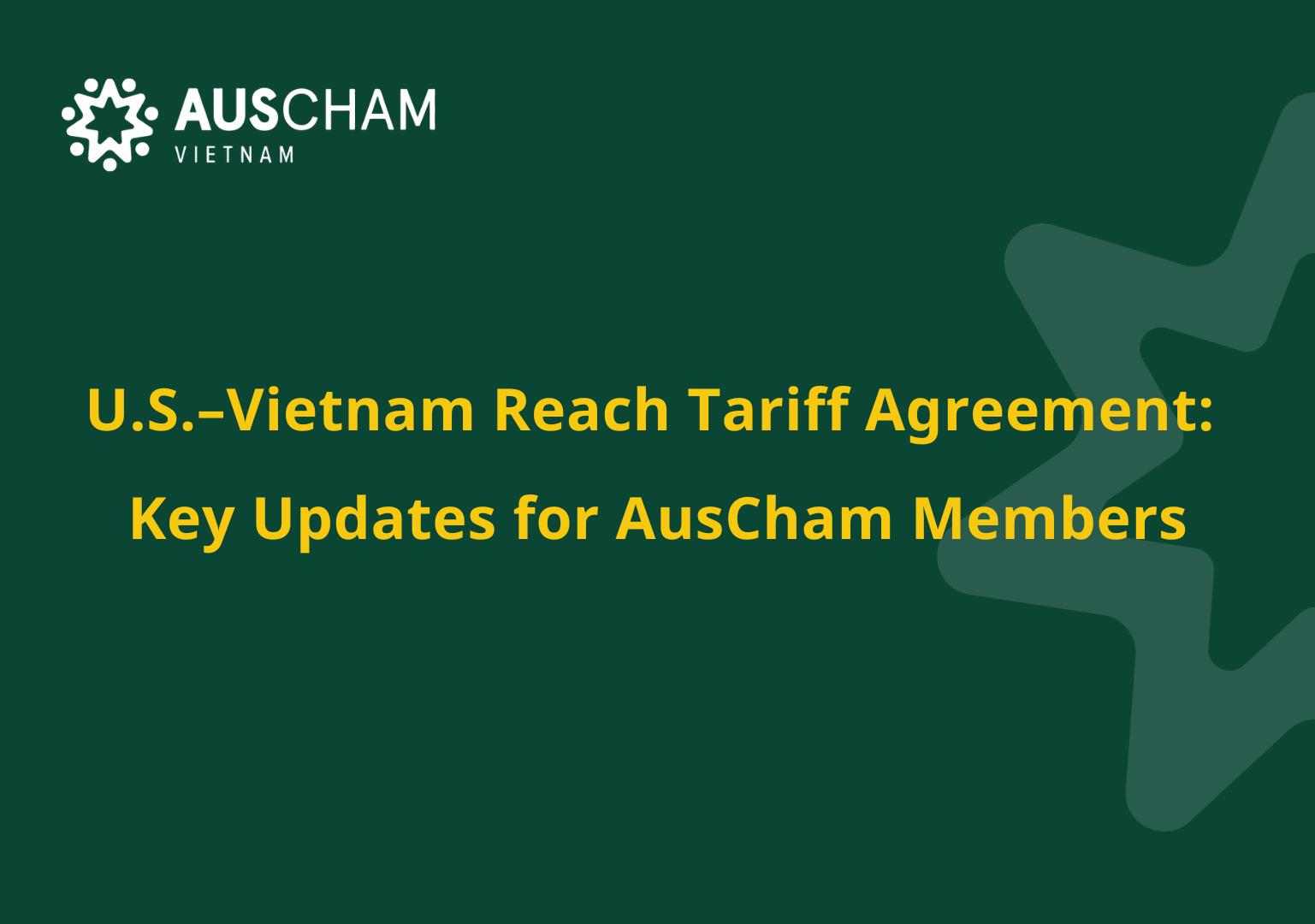U.S.-Vietnam Reach Tariff Agreement: Key Updates for AusCham Members

HANOI / WASHINGTON, July 2, 2025 - U.S. President Donald Trump has announced a reciprocal tariff framework with Vietnam under his “Liberation Day” trade policy. The deal - and its implications - are resonating across ASEAN, with particular interest for Australian exporters and businesses in the U.S.-Vietnam-Australia corridor.
What the Deal Encompasses?
U.S. Tariffs Reduced: Vietnamese exports to the U.S. will be subject to a flat 20% tariff, down from previously proposed 46%
Transshipment Tariffs: Goods routed via Vietnam from third countries—especially China—will face a steep 40% tariff, targeting tariff avoidance
Zero Duty for U.S. Exports: In exchange, Vietnam has committed to zero tariffs on many American imports, including large-engine vehicles
Pending Clarifications?
The deal functions as a framework agreement, not a binding treaty. Details on rules of origin, enforcement, and sectoral coverage are still unresolved and under technical discussion, reflecting concerns that transshipment definitions remain vague .
📈 Market & Economic Reactions
Vietnam’s response: Hanoi has welcomed the framework as a pragmatic compromise that offers stability, although exporters—particularly in seafood and electronics—worry the level of tariffs remains high.
U.S. markets: Shares of consumer brands like Nike, Under Armour, and VF Corp rose following the news, reflecting investor optimism.
🏛️ Strategic & Regional Implications
U.S.–China supply-chain reset: The transshipment tariff shows Washington’s clear intent to disrupt China-linked value chains and discourage manufacturing shifting through low-cost proxies
Vietnam’s balancing act: Tightly intertwined with China—both industrially and diplomatically—Vietnam now faces pressure to redefine trade relations to safeguard access and avoid Beijing’s backlash
Asia-wide precedent: India, Cambodia, and others are watching closely; this may become a template for future U.S. reciprocal deals ahead of the July 9 deadline
What It Means for AusCham Members?
Vietnam-based suppliers: May gain increased U.S. demand, yet must navigate new compliance costs, rules of origin, and customs scrutiny on component sourcing.
Australian exporters: Could face stiffer competition in the U.S. market from tariff-favoured Vietnamese goods. AusCham members should assess whether U.S. buyers might shift sourcing priorities.
Australia–U.S. trade posture: With this deal finalised, there’s growing pressure on Canberra to seek comparable reciprocal terms. Australian industry groups have urged Prime Minister Albanese to engage U.S. policymakers decisively .
Recommended Next Steps for Members
Monitor technical rollouts—stay updated on updates to rules of origin, tariff lists, customs definitions, and enforcement protocols.
Analyze supply‑chain exposure—companies should map out Vietnam-linked sourcing routes to anticipate compliance risks.
Evaluate competitive positioning—consider whether U.S. buyers might pivot from Australian to Vietnamese suppliers.
Engage with AusCham advocacy—support ongoing efforts to elevate Australia’s position in reciprocal tariff discussions.
AusCham will continue to closely monitor developments, especially any sector-specific details that could affect market competitiveness and trade policy.
Should you have any inquiries, kindly contact AusCham Head of Advocacy & Partnership, Ms Huong Tran, at advocacy@auschamvn.org
